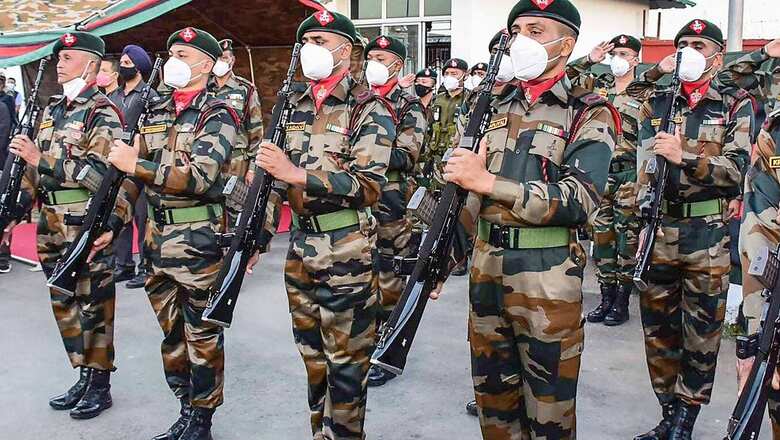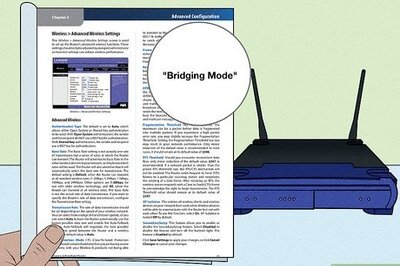
views
The Army is likely to review its decision to reduce the number of troops deployed on counter-insurgency duties in the Northeast as it looks to realign their deployments in the wake of a spate of insurgency-related incidents in the region, News18.com has learnt.
This will particularly be the case in Assam, Manipur, Arunachal Pradesh and Nagaland, where some of the active insurgent groups haven’t yet entered into a ceasefire agreement with the government.
These groups include ULFA (I) in Assam, NSCN-K (YA) in southern Arunachal Pradesh and Nagaland, and other Imphal valley-based insurgent groups like the People’s Liberation Army (PLA), People’s Revolutionary Party of Kangleipak (PREPAK), Kanglei Yawol Kanna Lup (KYKL) and the United National Liberation Front (UNLF).
Some other Kuki insurgent groups have also not entered into a formal ceasefire agreement, but are under suspension of operations.
Last week, the PLA and Manipur Naga People’s Front (MNPF) insurgents carried out a major attack in Manipur’s Churachandpur district in which Colonel Viplav Tripathi, Commanding Officer of 46 Assam Rifles, was killed along with his wife and six-year-old son, and four soldiers of the battalion. The attack was executed by Meitei groups in a Kuki-dominated area.
On Monday, three militants of another insurgent outfit, the National Socialist Council of Nagalim (NSCN K-YA), were killed in a joint operation by the Assam Rifles and Arunachal Pradesh police. The militants had kidnapped two civilians.
Last month, four militants of the Kuki National Liberation Army in Manipur were killed by security forces. Few days later, in what was believed to be a retaliatory attack, militants killed four civilians.
Army chief General MM Naravane had earlier this year said that the security situation in the Northeast had improved significantly, as a result of which, the Army had pulled out one of its brigades from the region.
Initial plans were also being devised to gradually move out more troops from the Northeast in the months to come so that the Army can move away from internal security duties and focus on its primary duty of conventional warfare.
Spike in Violence
Defence sources said the number of insurgency-related incidents in the Northeast had seen fluctuations in the last few years, but further withdrawal of counter-insurgency troops from the region may not be an option right now.
“A realignment of troops deployed in these states, particularly in border areas and in places where active insurgents haven’t entered into a ceasefire with the government, could be undertaken based on the different ground and intelligence inputs,” a defence official said, adding that counter-insurgency grid changes are periodically undertaken.
Former Director General of the Assam Rifles (Retd) Lt. Gen. Shokin Chauhan told News18.com there could be a few reasons behind the sudden spate of violence in the region. “There could be tacit support from China for its proxies to go ahead and create mayhem in the Northeast,” he said.
“Moreover, a place like Churachandpur has been a conduit for narcotics and other smuggling activities on which the Assam Rifles was cracking down heavily. So a blowback was expected,” he said. He added that the groups want to show their relevance and at a location where its base population does not live.
The former Chairman of the Kohima-based ceasefire monitoring group further said it is high time the Centre undertakes peace talks with these groups. “The issues cannot be allowed to fester anymore,” he said.
Violence by Insurgents in Northeast
As per data accessed by News18.com, insurgents carried out 162 violent incidents in the Northeast from January 1 to October 31 this year, up from 132 in the corresponding period last year. Of these, Manipur reported the highest number of incidents at 90, followed by Arunachal Pradesh at 22 and Assam at 18.
There were 223 insurgency-related incidents in the Northeast in 2019, while in 2020 this number stood at 163. As many as 12 insurgents were killed in 2019, followed by 21 in 2020 and 31 till October 31 this year.
In 2019, 21 civilians were killed in such incidents in the Northeast, while three died the following year. Eight civilians have died in insurgency-related violence till October 31 this year. Such attacks claimed the lives of four security personnel in 2019 and five the following year. With latest attack in Manipur, this toll has reached six this year.
Security Situation in the Northeast
Sources said trends with respect to insurgent groups in the Northeast tend to fluctuate, with sudden big attacks interspersed with months of calm. The Kuki and Imphal valley-based Meitei insurgent groups continue to be primarily operational in Manipur, where the latest ambush took place.
While many of the Kuki groups have entered into a Suspension of Operations (SOO) pact — short of a ceasefire agreement — with the Centre, the Meitei groups (which include PLA, PREPAK, KYKL, UNLF) have never come to the table for any peace talks nor signed any ceasefire agreement.
Security sources said the PLA operates mostly from inside Myanmar. “The latest attack has been carried out by PLA insurgents residing in camps in the Chin state of Myanmar, who would have gone back there after executing the attack,” a security source said.
“While they (PLA) have been indulging in smuggling and extortion activities, taking into account the deteriorating situation in Myanmar post the military coup and the upcoming elections in Manipur, they can attempt to disturb the security situation in the state,” the source added.
“This is also evident from the fact that Colonel Viplav Tripathi was actively involved in anti-smuggling operations and was killed by a Meitei group in a Kuki-dominated area. This shows the various complexities and interests in play in the state at this point,” he said.
Sources said smuggling is a major revenue source for these groups which is one of the reasons they target security forces engaged in anti-smuggling operations.
Defence sources said some positive development in peace talks with Naga insurgent groups is expected, particularly with the NSCN (IM), which has been adamant on a separate flag and constitution (or Yezabo) before signing the peace accord. The demand has been rejected by the Centre. Earlier, the NSCN (K) had abrogated ceasefire with the central government in March 2015, just before a Framework Agreement for Naga Peace Accord was signed by the latter with the NSCN-IM group.
“While it is too early to say how things will pan out exactly, the NSCN (IM) is more comfortable with the new interlocutor,” a second source said. Current Tamil Nadu Governor RN Ravi was the former interlocutor in the Naga peace talks.
Sources also indicated that while the government is attempting to bring the NSCN (IM) to the talks table for an agreement, it is also in regular talks with another Naga insurgent group, the NSCN (K) Niki Sumi. This faction had signed a year-long ceasefire agreement with the central government in September.
Niki Sumi is a Naga from Nagaland and is considered closer to the state’s people as against majority of the NSCN (IM) cadre who are from Manipur, including Thuingaleng Muivah himself.
The government had entered into an understanding termed ‘agreed position’ with the conglomerate of Naga groups, also known as NNPGs, including the NSCN (NK), NSCN (R), NSCN (U), FGN and NSCN (K)-Khango, and is learnt to have concluded talks with them.
In Arunachal Pradesh, the NCSN K (YA) continues to remain active in the three districts of Arunachal Pradesh — Tirap, Longding and Changlang. It is also operational in the Mon district of Nagaland. The group, majority of whose cadre are Myanmarese, has not entered into any ceasefire agreement with the central government.
Another NSCN (IM) leader, Major-General Absalom Rockwang Tangkhul, is also operating in southern Arunachal Pradesh and was responsible for the killing of legislator Tirong Aboh, his son and nine others in an ambush in 2019. There is an NIA case against him and it is suspected that he has been stationed in Myanmar by NSCN (IM).
In Assam, Paresh Barua has continued declaring extensions to the unilateral ceasefire it declared in May this year. However, security sources said they are tracking the status closely as the insurgent outfit is known to declare ceasefires when in trouble.
ULFA (I), sources said, is now reportedly plagued by “low morale”, especially after its top leaders Drishti Rajkhowa and Jibon Moran surfaced above ground and were taken into custody by security forces.
“The infighting within ULFA and their low finances have contributed to the issues,” a source said.
But, despite being a spent force as claimed by security officials, Baruah has refused to budge from his primary demand of Assam’s sovereignty. Sources say Assam CM Himanta Biswa Sarma has been working on bringing ULFA (I) onboard for talks.
Read all the Latest India News here




















Comments
0 comment